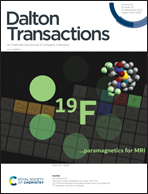Native frustrated Lewis pairs on core–shell In@InOxHy enhances CO2-to-formate conversion†
Abstract
Strategies to efficiently activate CO2 by strongly inhibiting the competitive hydrogen evolution reaction process are highly desired for practical applications of the electrochemical CO2 reduction technique. Here, we assembled a core–shell In@InOxHy architecture on carbon black by one-step reduction of NaBH4 as a CO2-to-formate catalyst with high selectivity. The stable CO2-to-formate reaction originates from the creation of steritic frustrated Lewis pairs (FLPs) on the InOxHy shell with In–OVs (OVs, oxygen vacancies) Lewis acid, and In–OH Lewis base. During CO2 reduction, the electrochemically stable FLPs are capable of first capturing and stabilizing protons to protonate FLPs to In–H Lewis acid and In–OH2 Lewis base due to its strong steric electrostatic field; then, CO2 is captured and activated by the protonated FLPs to selectively produce formate. Our results demonstrated that FLPs can be created on the surface of oxyphilic single-metal catalysts efficient in accelerating CO2 reduction with high selectivity.



 Please wait while we load your content...
Please wait while we load your content...